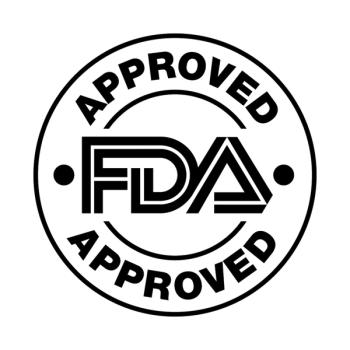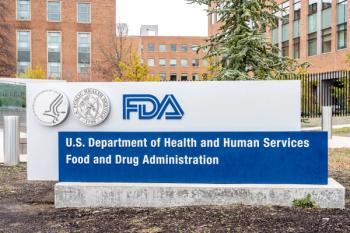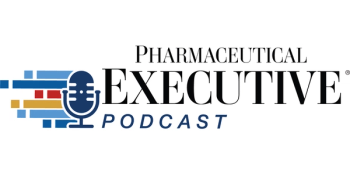
Bristol Myers Squibb Reveals Promising Results from Trial of Zeposia for Multiple Sclerosis
Phase III DAYBREAK study found consistent safety with Zeposia in patients with relapsing forms of multiple sclerosis.
Bristol Myers Squibb (BMS) has announced positive results from the Phase III DAYBREAK study of Zeposia (ozanimod) for relapsing forms of multiple sclerosis (MS). Findings from the open-label extension trial were showcased at the ACTRIMS Forum 2024. BMS noted that Zeposia demonstrated a consistent and sustained safety and efficacy profile, stating that there is potential for the drug as a support system for managing relapsing forms of MS.1
“These DAYBREAK data continue to validate the role of Zeposia in the long-term management of relapsing forms of multiple sclerosis, with two-thirds of patients relapse-free at six years of treatment,” said study investigator Bruce Cree, MD, PhD, MAS, professor of clinical neurology, University of California San Francisco (UCSF) Weill Institute for Neurosciences, clinical research director, UCSF MS Center, in a press release. “These findings add to our confidence in Zeposia as an important treatment option for people living with the disease, highlighting its efficacy and safety over time.”
Investigators enrolled a total of 2,494 patients were administered Zeposia for approximately 61 months. The treatment showed a low annualized relapse rate of 0.098, with three- and six-month confirmed disability progression (CDP) being absent in both 82.8% and 84.8% of participants. During the DAYBREAK trial, the most frequently reported adverse events were nasopharyngitis, headache, COVID-19 infection, and upper respiratory tract infection.1
“Currently no cure exists for multiple sclerosis, but effective strategies and treatments can help slow disease progression and alleviate symptoms,” said Jonathan Sadeh, MD, MSc, SVP, head of global program leaders, immunology, cardiovascular and neuroscience development, Bristol Myers Squibb, in the release. “These DAYBREAK efficacy, safety and rebound data underscore a consistent and sustained safety and efficacy profile and add to the body of evidence supporting Zeposia’s role in the treatment armamentarium. We remain focused on advancing care and delivering meaningful innovations in neuroscience, including for the millions of people impacted by relapsing forms of multiple sclerosis.”
Last October, BMS also announced data showing that after eight years of follow-up, 76% of patients treated with Zeposia for relapsing multiple sclerosis wound up free of six-month CDP from both the DAYBREAK and RADIANCE trials. Further, Zeposia treatments reportedly resulted in low rates of progression-independent relapse activity (PIRA) and relapse-associated worsening.
“Even in the absence of relapses, people living with multiple sclerosis may have smoldering neuroinflammation, which is underlying and continuous disease activity occurring simultaneously in different areas of the brain that can start at the earliest stages of multiple sclerosis and cause an irreversible decline in cognitive function, mobility and quality of life,” said Jeffrey Cohen, MD, Mellen Center for Multiple Sclerosis Treatment and Research, Neurological Institute, Cleveland Clinic, Cleveland, Ohio, paid consultant for Bristol Myers Squibb, in an additional press release. “Given literature has shown that 25% of people living with multiple sclerosis develop PIRA after approximately seven years, these new analyses are relevant for doctors and patients as they consider early intervention with highly effective therapies to hinder smoldering disease, an important, early driver of long-term disability and relapses, the hallmarks of disease progression.”
References
1. Bristol Myers Squibb Announces New Data from the Long-Term DAYBREAK Study Reinforcing Efficacy and Safety of Zeposia (ozanimod) in Patients with Relapsing Forms of Multiple Sclerosis. BMS. February 29, 2024. Accessed March 1, 2024. https://news.bms.com/news/details/2024/Bristol-Myers-Squibb-Announces-New-Data-from-the-Long-Term-DAYBREAK-Study-Reinforcing-Efficacy-and-Safety-of-Zeposia-ozanimod-in-Patients-with-Relapsing-Forms-of-Multiple-Sclerosis/default.aspx
2. Bristol Myers Squibb Presents New Zeposia (ozanimod) Data on Long-Term Disease Progression and Cognition in Patients with Relapsing Forms of Multiple Sclerosis. BMS. October 11, 2023. Accessed March 1, 2024. https://news.bms.com/news/corporate-financial/2023/Bristol-Myers-Squibb-Presents-New-Zeposia-ozanimod-Data-on-Long-Term-Disease-Progression-and-Cognition-in-Patients-with-Relapsing-Forms-of-Multiple-Sclerosis/default.aspx
Newsletter
Lead with insight with the Pharmaceutical Executive newsletter, featuring strategic analysis, leadership trends, and market intelligence for biopharma decision-makers.





